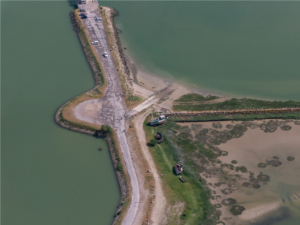Last post, I asked whether you want to “manage” anger, or to really “master,” i.e., master is in charge, knowing how anger works, why you’re working with it, what to do to change it, its liabilities and benefits, and what to do if you don’t want to keep getting angry/frustrated/vexed/irritated the same old ways.
Are you considering your answer? Even if you’re not ready to decide now, entertain the idea of someday becoming an Anger Master.
Let’s talk about what makes anger our most active emotion, and why that’s important in successfully handling anger.
Anger—like all emotions—is energy in motion
When you hold emotional energy inside of you, it still moves around, affecting you in some way. We say that anger is our “most active” emotion because it is SO active when we hold it inside that its effects are quite destructive, in five powerful ways. Other emotions can be held inside with only a fraction of the negative consequences that result from holding onto anger. AND, anger “bleeds through” to your life more than any other emotions onto which you’re holding.
Let’s discuss a few of the five ways anger “processes” through us when we hold onto it.
First, held-onto anger negatively affects our minds, clouding our perception, stimulating quick defensiveness, developing a “chip” on our shoulder, and leaving us handicapped in how we see things, so we can respond objectively. Held-onto angers’ negative impact on our minds can trap you into negative loops. Love may make you “twitter-pated;” anger can leave you dissipated.
Second, held-onto anger undermines all 7 Building Blocks of Self Esteem. Taking responsibility, for example, is impossible. To relate responsibly, we need to acknowledge, share and work with anger we feel. Holding anger inside requires us to run “perimeter patrols” around all of our emotions, so anger doesn’t escape or explode. When we’re doing this, we cannot take the responsibility of being authentic, sharing intimately, or for our choices. Like an addict, whose addiction becomes more important than the people s/he loves, the anger-harborer chooses anger over authenticity, love and intimate relating.
Third, anger sets the conditions for illness. Research shows anger is a part of a wide variety of illnesses and problems, including heart attacks, high blood pressure, alcoholism, obesity, stroke, asthma, autoimmune diseases, insomnia, low back pain, sexual dysfunction and gum disease. Held onto long enough, anger can kill you.
At work, held-onto anger creates relationship problems on all levels, slows production, creates bad working environments, stimulates absenteeism and blocks creative problem-solving. At home, anger poisons relationships, subverts loving parenting, foments abuse, keeps us indebted, sucks our energy and enthusiasm, and makes us sick.
All of this means that anger can ruin your life
Unless we actively work to move anger’s energy out of us, anger poisons you, the “vessel” in which it is held!
 Many people believe emotions behave unpredictably. They don’t. They follow laws (from classical physics) that govern energy. If we hold water behind a dam, it builds in both volume and pressure. If we hold anger inside, it builds volume and pressure. With water in a lake, everything operates well until a storm adds more water, or a crack develops in the dam. Then water rushes out wildly and unpredictably, extremely destructive to the environment.
Many people believe emotions behave unpredictably. They don’t. They follow laws (from classical physics) that govern energy. If we hold water behind a dam, it builds in both volume and pressure. If we hold anger inside, it builds volume and pressure. With water in a lake, everything operates well until a storm adds more water, or a crack develops in the dam. Then water rushes out wildly and unpredictably, extremely destructive to the environment.
With held-onto anger, everything appears to operate well (though damage is occurring within us), until some incident adds additional anger, developing a “crack” in our usual ability to hold it inside. Then anger rushes out wildly and unpredictably, destructive personally and at work.
Remember: we when don’t block water, it just flows through its river/stream bed. Allowing anger to come up, do its work, and move on instead of building up, sends it flowing through, like water in the riverbed.
Think of yourself as a “channel” for the energy of all emotions. Allowed to do its job and pass through us, anger flows naturally, functions as our tool and does not build up or fluctuate wildly.
Allowing anger to flow naturally lets us make lasting changes not requiring ongoing “management.” Like setting an assembly line and allowing it to move products, only periodic quality checks are required. With Anger Mastery, we take the emotional “talent” we’ve been given and put ourselves in charge of it. Anyone can master anger; we’re designed to be in charge of our emotions. Now is the time for everyone to reclaim our own masterful relationship with anger.
When anger arises in you, allow it to come up. Examine your feelings and allow yourself to release anger’s energy without dumping it on others. Write out what you feel angry about; distill it down to one word, or sit quietly (eyes closed), allowing anger’s energy to quietly dissolve. Once you’ve released the energy, look at what message the anger has for you.
Next time, we’ll look at how anger signals us to make perceptual changes in our minds and lives. You’ll be following the principle that guides my life, and thousands of others: “Pay attention, not to what you want to overcome, but to what you want to become.”
Until then, look for ways to empower yourself, even if only for “next time,” when you can change your part and aim for new outcomes. Note your discoveries in your journal. For more about emotions and how to work with them, be sure to get your copy of Emotions in Motion: Mastering Life’s Built-in Navigation System. Check for it on my websitewww.emotionalmasteryforlife.com beginning September 2019.

Leave a Reply